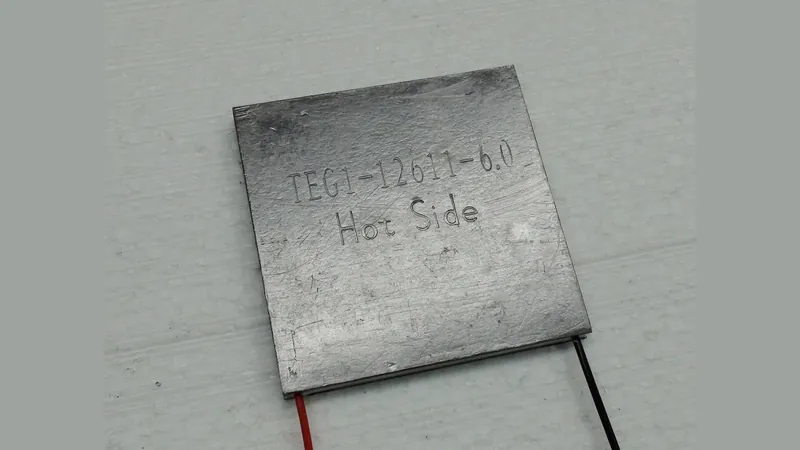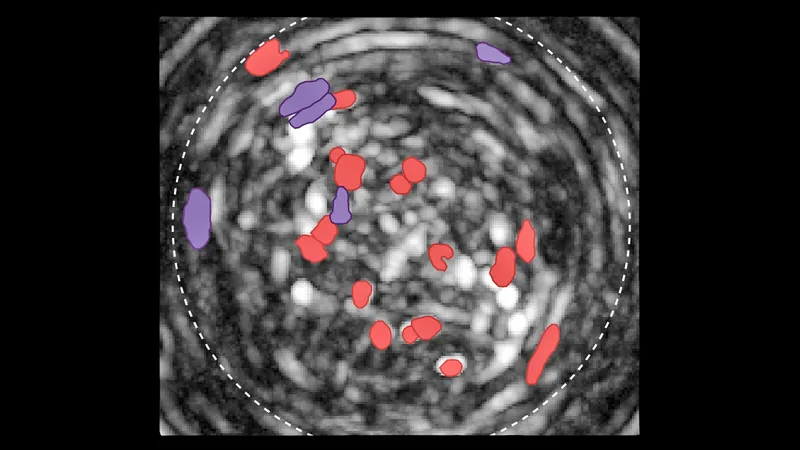
Revolutionary Discovery: Scientists Finally Observe the Transverse Thomson Effect!
2025-07-16
Author: Wei
A Century-Old Mystery Unveiled
In a groundbreaking study published in *Nature Physics*, a team of researchers has achieved the first experimental observation of the transverse Thomson effect, a pivotal thermoelectric phenomenon that has baffled scientists for over a hundred years.
The Thermoelectric Framework
The world of thermoelectric effects has been built on key discoveries made in the 1800s, including the Seebeck, Peltier, and Thomson effects. These principles have shaped our understanding of how heat interacts with electricity in various materials. The Thomson effect specifically creates either heating or cooling when electrical current flows alongside a temperature gradient.
A New Front in Thermoelectric Research
While scientists have theorized about a transverse version of this effect, which occurs when an electric current, temperature gradient, and magnetic field intersect at right angles, it was only recently that the research team, led by Atsushi Takahagi from Nagoya University and Ken-ichi Uchida from the University of Tokyo, succeeded in demonstrating its existence.
"My work has always been driven by the thermoelectric effect, particularly for its potential in energy harvesting and thermal management," Takahagi shared, emphasizing the significance of their findings.
The Challenge of Observation
Observing the transverse Thomson effect has posed serious challenges due to interference from other thermal effects, complicating experimental readings. To tackle this, the researchers employed cutting-edge thermoelectric imaging techniques, utilizing lock-in thermography to isolate the effect.
"We used an infrared camera to capture the thermal responses of our sample triggered by a periodic electric current," explained Uchida. "This allowed us to effectively filter out competing signals and hone in on the thermoelectric effects we were studying."
Innovative Measurement Techniques
By conducting measurements both with and without a temperature gradient, the researchers were able to subtract the results, ultimately isolating the elusive transverse Thomson signal from the data.
Choosing the Ideal Material
For their experiments, the team focused on a bismuth antimony alloy known as Bi88Sb12, recognized for its strong Nernst effect around room temperature. This unique material creates electric fields when subjected to magnetic fields and temperature gradients.
The Ettingshausen effect, which operates in reverse, was also a point of interest in their study, showcasing how electric currents can induce temperature gradients.
Heat Control at Your Fingertips
A remarkable find was that researchers could switch between heating and cooling simply by changing the direction of the magnetic field. This discovery showed intricate field-dependent behavior with unexpected sign reversals at specific magnetic strengths.
The transverse Thomson coefficient consists of two components: one linked to the increase of the Nernst coefficient (usually causing heat) and another related to its overall magnitude (typically leading to cooling). This competition creates the intriguing field-dependent sign changes noticed in their experiments.
Implications for Future Technologies
This transformative discovery paves the way for groundbreaking advancements in thermal management technologies, particularly in precision heating and cooling applications. Takahagi remarked on the potential of the transverse Thomson effect, envisioning it as a game-changer in the development of thermoelectric cooling devices.
With further research, the team anticipates finding materials where the two components supporting the transverse Thomson effect could enhance its magnitude, unlocking new avenues for high-performance thermoelectric applications.
As this field continues to evolve, the prospect of discovering more efficient materials holds exciting promise for the future of energy technology.



 Brasil (PT)
Brasil (PT)
 Canada (EN)
Canada (EN)
 Chile (ES)
Chile (ES)
 Česko (CS)
Česko (CS)
 대한민국 (KO)
대한민국 (KO)
 España (ES)
España (ES)
 France (FR)
France (FR)
 Hong Kong (EN)
Hong Kong (EN)
 Italia (IT)
Italia (IT)
 日本 (JA)
日本 (JA)
 Magyarország (HU)
Magyarország (HU)
 Norge (NO)
Norge (NO)
 Polska (PL)
Polska (PL)
 Schweiz (DE)
Schweiz (DE)
 Singapore (EN)
Singapore (EN)
 Sverige (SV)
Sverige (SV)
 Suomi (FI)
Suomi (FI)
 Türkiye (TR)
Türkiye (TR)
 الإمارات العربية المتحدة (AR)
الإمارات العربية المتحدة (AR)